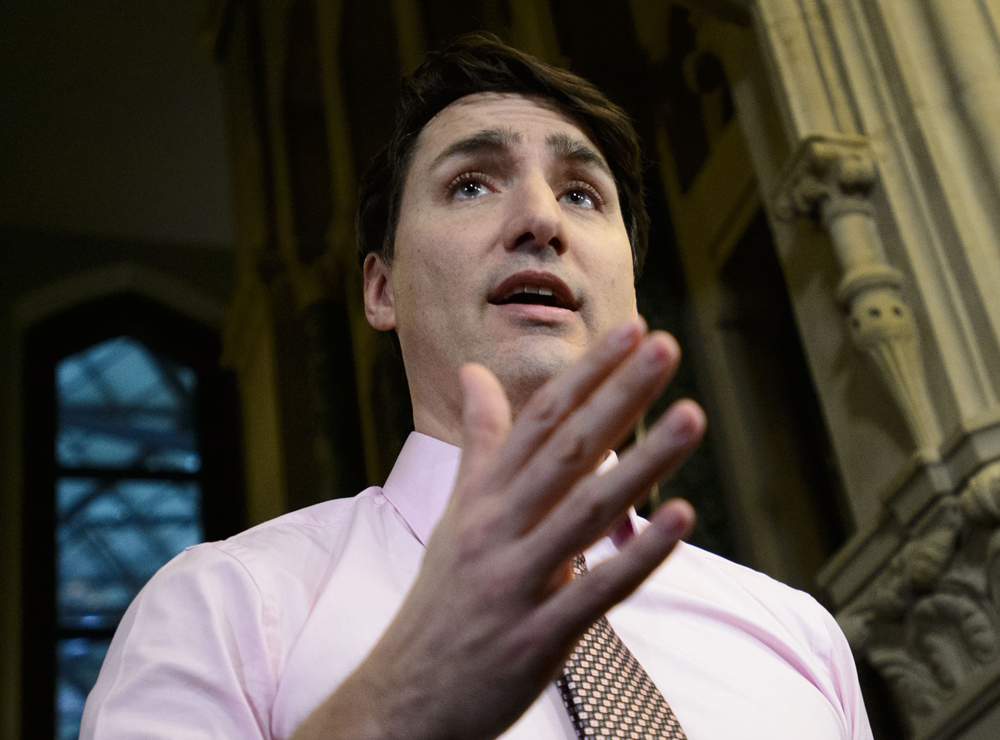Finance Minister Bill Morneau delivered a pre-election budget built for voters, not businesses, disappointing those who hoped for a broad-based corporate tax cut, a comprehensive review of Canada’s aging tax code or other measures to boost competitiveness.
Following a fall economic statement designed to address business concerns, Morneau’s fourth budget marked a hard shift back toward middle class issues that appeal directly to the electorate, including support for first-time homebuyers, seniors and skills training.
“They did what they were going to do for businesses in the fall,” said Sebastien Lavoie, chief economist at Laurentian Bank Securities. “You could argue those moves came too late, but it was clear there weren’t going to be any more.”
Nevertheless, some of the key pillars of Morneau’s fourth budget, while designed for a different audience, will also benefit Canadian businesses, said Craig Alexander, chief economist at Deloitte Canada. Among the items that will have the most obvious impact is spending related to skills training.
More than 40 per cent of businesses have reported labour and skills shortages, with many job vacancies remaining unfilled, which suggests “a skills mismatch,” Alexander said.
“They are investing in human capital to address that,” he said. “And if you look at us versus other countries, a key advantage of ours has been talent. This budget doubles down on that.”
The federal budget earmarks more than $1.7 billion for skills training programs including a new non-taxable credit to help pay for training fees. Under the program, workers between the ages of 25 and 64 would accumulate a credit of $250 each year to a lifetime maximum of $5000. Starting in 2020, these credits can be used to match worker investments in skills training.
A new Employment Insurance Training Support Benefit offers 55 per cent of average income for up to four weeks of paid leave to support training.

“We’re going to need more resilient workers to deal with the disruption of technology,” Alexander said. “Having the worker contribute some of the funding and having the government match that funding basically cuts the cost of training but also ensures that there is a worker motivation to be really successful because they have skin in the game.”
Not all were as enthusiastic. While supportive of efforts to retrain workers and address skills shortages, the Canadian Federation of Independent Business was leery of the price tag, suggesting the Canada Training Benefit would increase the cost of the EI system by $300 million per year with no guarantee that what workers study will match the needs of employers.
The budget made some moves to address regulatory burden in the form of “regulatory roadmaps” to address red tape in agri-food and aquaculture, health and biosciences and transportation and infrastructure. The measures include the introduction of “regulatory sandboxes” or “safe spaces” that allow innovative products and services to be tested without immediately being subjected to regulatory requirements. A new advisory committee on regulatory competitiveness will also be established to identify opportunities to streamline regulations.

In an effort to boost research and development, the budget also amends the Scientific Research and Development Tax Incentive Program, which provides a 35 per cent refundable tax credit to small- and medium-sized businesses and a 15 per cent credit to all other businesses conducting scientific research and experimental development. While access to the enhanced 35 per cent credit is currently determined by a business’s level of income and capital, Morneau’s budget removes the income threshold, widening its availability to more companies.
“All of these measures are aligning with a lot of the recommendations that policy analysts are saying could improve outcomes from an innovation and regulatory standpoint,” Alexander said.
While many of the moves were welcome, they don’t necessarily address growing concerns about slumping business investment and a corporate tax rate that has now been undercut by reductions south of the border. The U.S. changes, which took effect January 2018, dropped the combined federal and state corporate tax rate from 38.9 per cent to 25.8 per cent, bringing it below Canada’s combined rate of 26.8 per cent.

Nor did the budget respond to requests from business groups to simplify and modernize Canada’s aging tax code. The Canadian Chamber of Commerce has criticized the code as outdated and cumbersome for businesses.
With business investment sliding and a domestic economy that all but stalled in the fourth quarter, many economists have argued a corporate tax cut – even to just a point below the U.S. – would have encouraged more investment in Canada from companies seeking a footprint in the North American economy.
Others suggest current geopolitical uncertainty driven by U.S. tariffs, Brexit and slowing global and domestic economies outweigh any tax incentive.
“If you think it’s a gloomy outcome you’re not going to invest even if those measures are there,” Lavoie said. “It goes well beyond tax rates. It’s disappointing though because if you want the economy to grow you need more capacity.”
• Email: npowell@nationalpost.com | Twitter: naomi_powell

